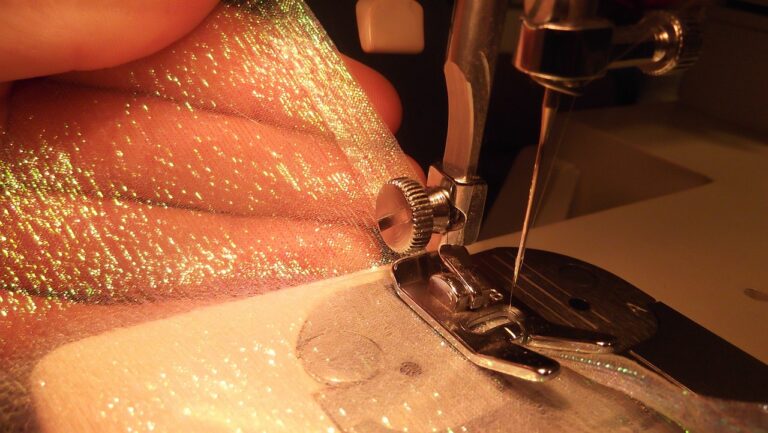Fashion and Gender Fluidity: Breaking Stereotypes in Clothing Design
In today’s society, traditional gender norms are being challenged and redefined in various aspects of life, including the world of fashion. The concept of gender fluidity has gained significant traction in recent years, as individuals are increasingly embracing the idea that clothing should not be restricted by rigid gender categories. This shift in mindset has paved the way for a new era of fashion design that is inclusive, diverse, and representative of the full spectrum of human identity.
The Evolution of Gender Identity in Fashion
Historically, clothing has been a powerful tool for expressing one’s gender identity. Traditional gender norms dictated that certain types of clothing were reserved for specific genders, with strict guidelines on how individuals should dress based on their assigned gender at birth. However, as societal attitudes towards gender identity have evolved, so too has the fashion industry’s approach to designing clothing.
Today, many fashion designers are rejecting the idea of gender-specific clothing in favor of designs that are gender-neutral or gender-inclusive. This shift has given rise to a new wave of fashion collections that challenge traditional notions of masculinity and femininity, offering individuals the freedom to express themselves authentically through their clothing choices.
The Rise of Gender Fluid Fashion
One of the most significant developments in the world of fashion in recent years has been the rise of gender fluid fashion. This term refers to clothing that is designed to be worn by individuals of any gender, blurring the lines between traditionally masculine and feminine styles. Gender fluid fashion embraces and celebrates diversity, giving individuals the opportunity to explore and experiment with different styles and aesthetics.
From oversized silhouettes and androgynous designs to bold colors and prints, gender fluid fashion embodies a sense of freedom and self-expression that transcends conventional gender norms. This shift towards more inclusive and diverse fashion has opened up new possibilities for individuals to express their unique identities through their clothing choices, regardless of their gender identity.
The Impact of Gender Fluidity on Clothing Design
As the concept of gender fluidity continues to gain momentum in the fashion industry, designers are rethinking traditional approaches to clothing design. Instead of creating collections that are strictly divided along gender lines, many designers are now embracing a more fluid and inclusive approach to design that caters to individuals of all genders.
Gender fluidity has influenced every aspect of clothing design, from the choice of fabrics and silhouettes to the marketing and branding of fashion collections. Designers are increasingly prioritizing inclusivity and diversity in their designs, creating clothing that is accessible and appealing to individuals of all gender identities.
The Role of Fashion Brands in Promoting Gender Fluidity
Many fashion brands have recognized the importance of promoting gender fluidity in their collections and marketing campaigns. By featuring gender-neutral clothing options and diverse representations of gender identities in their advertising, these brands are sending a powerful message that fashion is for everyone, regardless of their gender identity.
By embracing gender fluidity in their designs, fashion brands are not only catering to a more diverse customer base but also challenging traditional gender stereotypes and promoting a more inclusive and accepting society. This shift towards more inclusive and diverse fashion has the potential to create a more equitable and tolerant society where individuals are free to express themselves authentically.
Breaking Stereotypes Through Fashion
One of the most powerful aspects of gender fluid fashion is its ability to break down stereotypes and challenge societal expectations of how individuals should dress based on their gender. By creating clothing that is inclusive and diverse, designers are challenging traditional notions of masculinity and femininity, offering individuals the freedom to express themselves in a way that feels authentic and true to their identity.
Through gender fluid fashion, individuals are empowered to explore and experiment with different styles and aesthetics, creating a sense of freedom and self-expression that transcends conventional gender norms. By breaking stereotypes and celebrating diversity, fashion has the power to shape societal attitudes towards gender identity and promote a more inclusive and accepting world.
Frequently Asked Questions (FAQs)
Q: What is gender fluid fashion?
A: Gender fluid fashion refers to clothing that is designed to be worn by individuals of any gender, blurring the lines between traditional masculine and feminine styles.
Q: How has gender fluidity impacted clothing design?
A: Gender fluidity has influenced every aspect of clothing design, from the choice of fabrics and silhouettes to the marketing and branding of fashion collections.
Q: Why is gender fluid fashion important?
A: Gender fluid fashion is important because it promotes inclusivity and diversity in the fashion industry, challenging traditional gender norms and stereotypes.
Q: How can individuals incorporate gender fluid fashion into their wardrobe?
A: Individuals can incorporate gender fluid fashion into their wardrobe by experimenting with different styles, silhouettes, and colors that resonate with their personal sense of style and identity.
Overall, the increasing popularity of gender fluid fashion signals a positive shift towards a more inclusive and diverse fashion industry that celebrates the full spectrum of human identity. As designers continue to challenge traditional gender norms and embrace more fluid and inclusive approaches to clothing design, fashion has the power to shape societal attitudes towards gender identity and promote a more equitable and accepting world.







